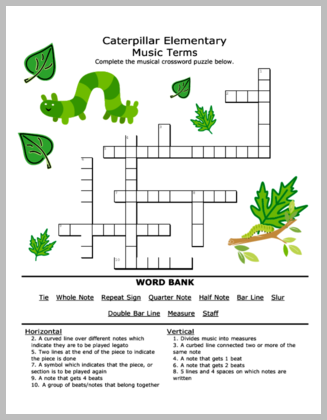 As you may recall, in a previous message I discussed how teaching note names through the use of jingles could create some undesirable issues. In this post I’d like to share with you how using landmarks and intervals will produce better, faster, and easier results when teaching note names to students.
As you may recall, in a previous message I discussed how teaching note names through the use of jingles could create some undesirable issues. In this post I’d like to share with you how using landmarks and intervals will produce better, faster, and easier results when teaching note names to students.
First, let’s examine what benefits exist from teaching note names through landmarks and intervals:
(1) When a student is learning to read note names they should first have (at least) a basic understanding of intervals and what is higher vs. lower. By teaching students to read notes through landmarks and intervals a teacher is not only teaching a new concept (note names), but is also reinforcing previously taught concepts. That’s a win-win situation.
(2) Additionally, using landmarks and intervals will help students see patterns, recognize how notes relate to each other, and help build speed in their sight reading skills.
(3) Teaching through landmarks and intervals does NOT require any extra or unnecessary steps. And nothing will need to be stamped out later on.
Sounds great, doesn’t it? Well here is how to do it:
STEP 1:
First, choose a few landmark notes. Landmark notes are notes which you want the student to know IMMEDIATELY on the spot — with no hesitation (once they have been taught the note names). The landmarks which I typically choose are Treble G, Bass F, and middle C (both from the bass clef and treble clef perspective).

This gives me a total of 4 landmark note cards to use. I will show the student a flashcard for each of the landmark notes, tell the student the note names, and show them where to find those notes on the keyboard. Then I go through it with the student several times, having the student say the names and finding the corresponding keys on the keyboard.
The assignment for the student that week is to practice those 4 landmark notes at home. After the initial lesson I will review the same landmark notes with my student until it is clear that he has them down cold (probably 0-3 more lessons are needed, depending on how well he has practiced at home, and how old he is).
STEP 2:
The next step is to choose a few closely related notes to the landmark notes (up to about a 3rd in either direction, up or down). At this point you will have the students figure out the note names on their own! Yep, that’s right. The teacher is obviously there for support and to give hints and help the student talk it through, but the goal is for the student to figure out the notes on his own — through the use of intervals.
To do this, you will have your student compare the new note to the landmark note. Is it higher or lower? And by how much (interval size)? For example, if the new note is treble E and the landmark note is middle C then the student will find E by recognizing that it is a third higher than C.

After figuring out the note name the student will find it on the keyboard and play it. In the case of the above example, the student would play Treble E on the keyboard.
Landmark notes and the closely related notes will be drilled until the student starts to become familiar and comfortable with, and able to figure out relatively quickly, the newer closely related note names.
STEP 3:
Once a student knows the original landmark notes down cold, and is becoming comfortable with the additional note names, it is time to introduce some additional landmark notes. I usually choose Treble C (on the space), Treble F (top line), and Bass C (on the space) and Bass G (bottom line). Or, perhaps just two at a time if that better suits a student’s needs and abilities.

Then I repeat the process for teaching and establishing landmark notes, as described in step 1 above. While I am doing this I continue to work on the original landmark notes and their closely related notes.
STEP 4:
In step 4 you will choose closely related notes to the NEW landmark notes and proceed according to step 2 above. As an aside — once you have added in these new closely related notes the student will be able to recognize and/or figure out all of the note names for the entire grand staff! Going forward all that is needed is to drill, drill, drill. Good ways to drill are through games, worksheets, reading note names in their music, etc. (More on that will be discussed in “Teaching Note Names, Part 3”).
 And that’s it. Ta-da! Simple, isn’t it?
And that’s it. Ta-da! Simple, isn’t it? 
EXTENSION:
This same method can be extended to teach the ledger line notes as well. Once a student is very comfortable with the notes on the grand staff I will move him on to the ledger line notes. I typically break the ledger lines up into two categories, such as the high and low C’s (2 ledger lines above/below the staves), and then Treble A (below treble staff), and Bass E (above bass staff). And, I repeat the steps outlined above by finding closely related notes through intervals.
For ideas on how to get your student from simply knowing the note names, to mastering them, stay tuned for my upcoming blog entitled, “Teaching Note Names (Part 3 – additional thoughts and ideas).”
